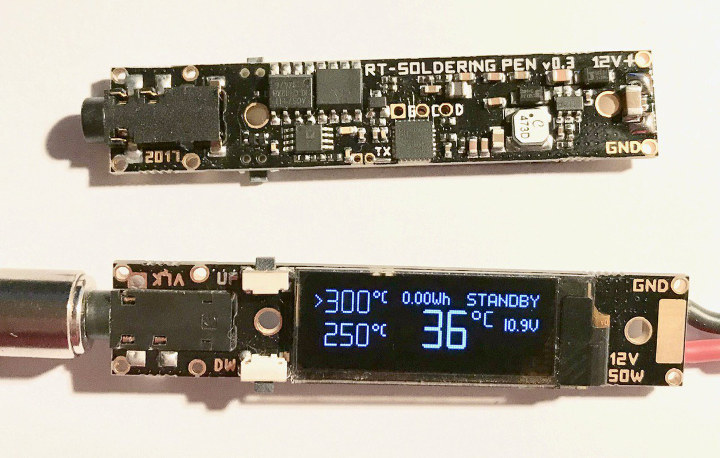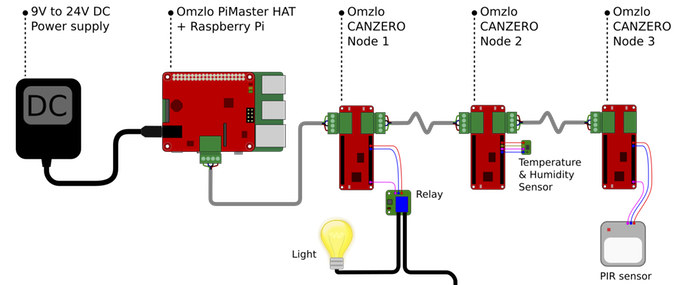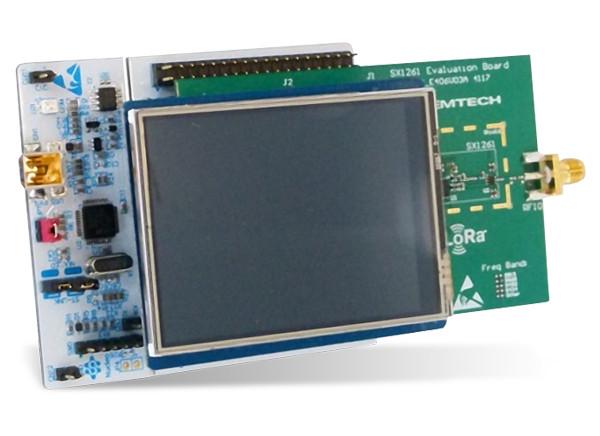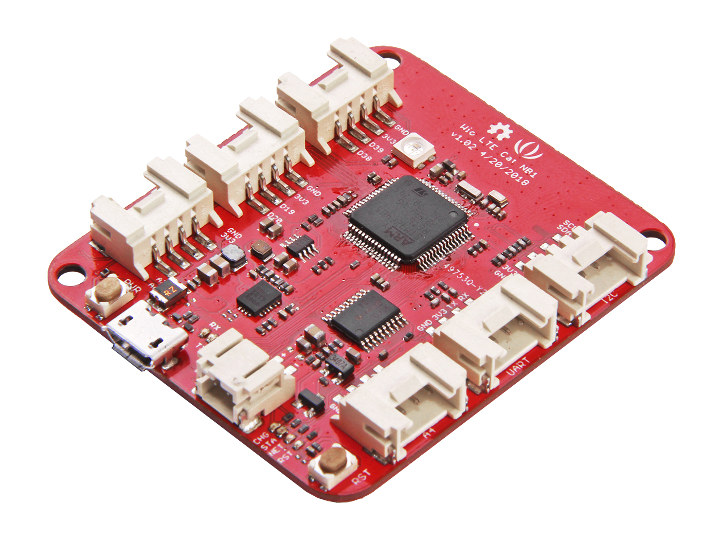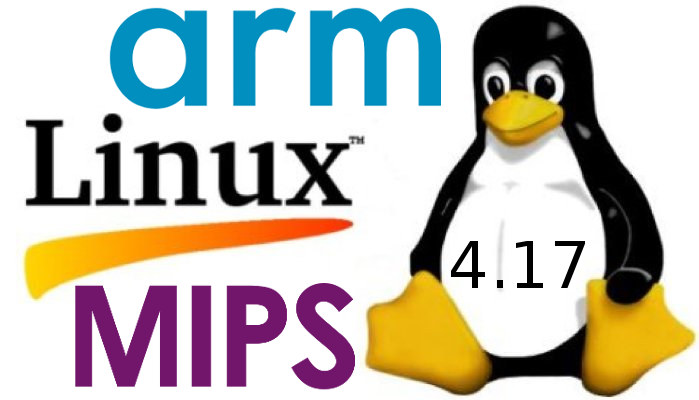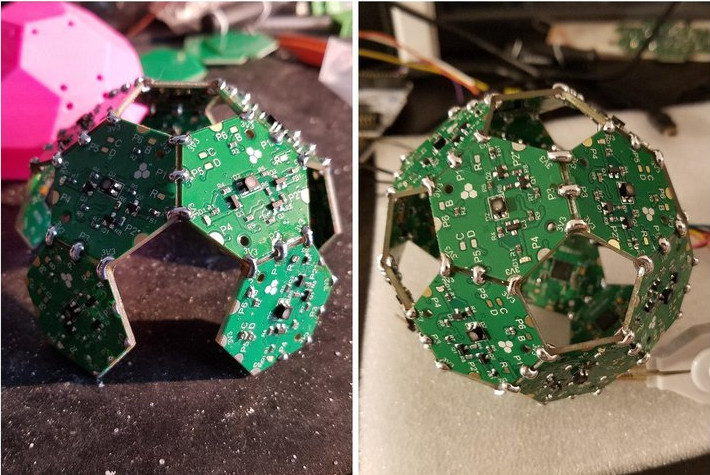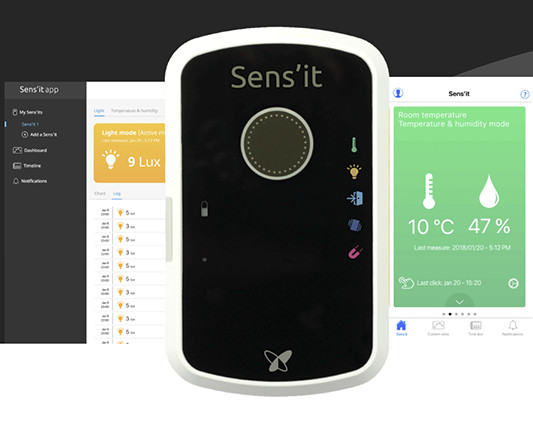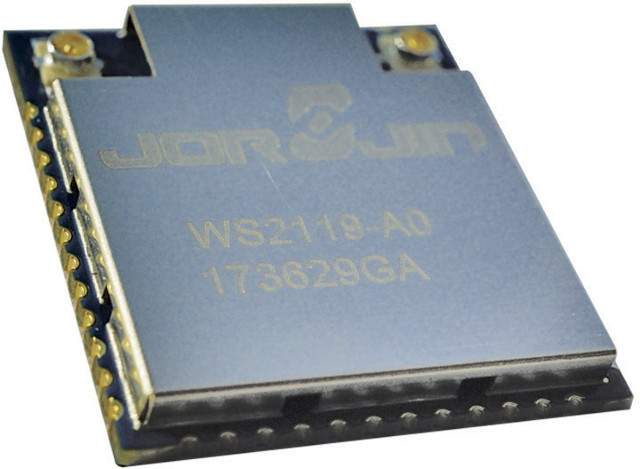The 3.5mm audio jack may be slowly disappearing from new mobile phones, but I’ve recently discovered they were also used in some soldering irons such as the upcoming TS80 USB soldering iron succeeding TS100 model. I initially thought it was a custom design from the maker of TSxxx soldering irons, but this morning I’ve come across the “RT Soldering Pen” board which also features a 3.5mm (audio) jack and can be used to make your own soldering iron by 3D printing your own enclosure, adding some power source, and inserting one of the many Weller RT tips available into the jack. RT soldering pen board specifications: MCU – STMicro STM32F031 Arm Cortex-M0 micro-controller Display – 0.91″ OLED display with 128×32 resolution Compatible with all Weller RT tips with 3.5mm jack. Set-point temperature – 20°C – 400°C with about +/-5°C accuracy (calibration is planed) Maximum measurable temperature – 500°C Heating speed […]
NoCAN IoT Platform Leverages Raspberry Pi & Arduino for CAN Bus Projects (Crowdfunding)
Many IoT projects rely on wireless connectivity through WiFi or Bluetooth, but in some cases it may be more reliable and convenient to use wired connectivity. The CAN Bus is a little like a low bandwidth Ethernet PoE solution for IoT, as it allows to transfer data over a serial connection while provided power at the same time, and can be daisy chain to support multiple boards. Omzlo’s NoCAN IoT platform provides a CAN bus solution leveraging Raspberry Pi 3 board through their PiMaster HAT acting as a CAN bus gateway, and Arduino compatible CANZERO boards to which you can connect sensors and actuators. Omzlo PiMaster HAT specifications: MCU – STMicro STM32F042 Cortex-M0 32bit ARM MCU – 48Mhz. Networking – 125000 bps CAN bus up to 300 meters range GPIO – Communicates with Raspberry Pi through SPI + GPIOs Security – Smart power switch with over-current protection. Power Supply – […]
Semtech SX1261/SX1262 LoRa Development Kit Now Available for $305
Semtech announced SX1261, SX1262 and SX1268 LoRa chips in January as updates to their current LoRa solutions with a lower footprint, better efficiency, and even longer range. Mass production and development kits were expected in March 2018, and today I found out Semtech SX1261/SX1262 development kit is sold on Mouser for $305. The SX126xDVK1CAS kit comes with the following items: 2x SX126xMB1xAS RF modules including an ST Nucleo Mbed board and a touchscreen 2x Mini-USB / USB connection cables 2x 868/915MHz antennas 2x Mini-USB cables 2x touchscreen styluses Read-Me Note The SX1261/SX1262 LoRa Transceivers offer continuous frequency coverage from 150MHz to 960MHz. You’ll find information to get started in the user guide. Basically, the two boards will show a menu on the touchscreen with radio test modes, settings and utilities (e.g. firmware update) as well as two demos: DEMO Ping Pong performs a bidirectional range test between the two radio […]
Wio LTE GPS Tracker Board Gets a Cat M1/NB1 Version for $59
Seeed Studio launched a family of GPS tracker boards staring with Wio GPS with 2G cellular connectivity, followed by Wio LTE board offering 4G connectivity several months later. The company is taking pre-order for an LTE Cat M1/NB1 version with NB-IoT / eMTC connectivity, and going for $59 plus shipping. The board is expected to start shipping on July 25th. Wio LTE Cat M1/NB1 board specifications: MCU – STMicro STM32F405RG Arm Cortex-M4 @ 168MHZ with 1M Flash, 192+4KB RAM Connectivity LTE uBlox SARA-R410M module LTE CAT M1 and NB-IoT Cat M1 Half-duplex (375 kb/s DL and UL) Cat NB1 Half-duplex (27.2 kb/s DL, 62.5 UL) Nano SIM and micro SD card 2-in-1 socket GNSS uBlox MAX-M8Q module PS, BeiDou, GLONASS, and Galileo 2.5m CEP(GPS), 4.0m CEP(GLONASS) USB – 1x micro USB port for power supply and DFU Expansions – Grove headers: 2x digital, 2x analog, 1x UART, 1x I2C Misc […]
Linux 4.17 Release – Main Changes, Arm & MIPS Architectures
Linus Torvalds released Linux 4.17 last Sunday: So this last week was pretty calm, even if the pattern of most of the stuff coming in on a Friday made it feel less so as the weekend approached. And while I would have liked even less changes, I really didn’t get the feeling that another week would help the release in any way, so here we are, with 4.17 released. No, I didn’t call it 5.0, even though all the git object count numerology was in place for that. It will happen in the not _too_distant future, and I’m told all the release scripts on kernel.org are ready for it, but I didn’t feel there was any real reason for it. I suspect that around 4.20 – which is I run out of fingers and toes to keep track of minor releases, and thus start getting mightily confused – I’ll switch […]
Hexabitz Modular Prototyping Platform Enables Wire-Free 3D Electronics Designs (Crowdfunding)
A few years ago, I made a Raspberry Pi case made of perfboard and created some sort of DIY modular 3D electronics design by using the top and sides of the case to also hold electronics components and associated circuitry like a relay, and LEDs. The just launched Hexabitz hexagonal / pentagonal modules are designed to make prototyping easier, and also provide flexibility to create all sort of wire-free (3D) electronics designs with minimal soldering. A little over a dozen of modules are currently on offer, most with an STM32F0 Arm Cortex M0 micro-controller: Modules with built-in MCU 01R00, P01R00 – RGB LED (hexagon / pentagon) with Cree Tri-color (RGB) SMD LED, 4-Pin PLCC H02R10 – Bluetooth/BLE V4 based on Laird BT900-SA + chip antenna, +8 dBm max H04R00 – Audio amplifier, speaker, and headphone jack based on ST TS4990IST 1.2W audio power amplifier, 0.7W, 8 Ohm speaker H05R00 – SPI […]
Sens’it Discovery is a Sigfox IoT Solution with 6 Sensors
Sigfox has just launched Sens’it Discovery, which they describe as a “end-to-end IoT solution, which aims to accelerate the adoption of the IoT (Internet of things) among business and technical professionals”. The solution is comprised for Sens’it 3 device with 6 sensors, sensit.io application, and Sigfox connectivity. Sens’it 3 hardware specifications: MCU – STM32 micro‑controller Connectivity TI CC1125 radio transceiver Sigfox Ready class 0U Frequencies – 868 to 869.7 MHz, 902 to 908 MHz, or 923.2 MHz (TX) / 922.2 MHz (RX), or 920 to 925 MHz depending on region Transmit Power emission – 14 dBm ERP (RC1), 22 dBm ERP (RC2), 10 dBm ERP (RC3), 22 dBm ERP (RC4) Sensors Thermometer (HTS221) – -40 to 120°C / Accuracy ± 0.5°C Humidity (HTS221) – 0 to 100 / Accuracy ± 3.5% rH (20 to +80% rH) Accelerometer (FXOS8700) – ±2, 4, 8 g / Accuracy 0.244, 0.488, 0.976 mg Magnetometer (FXOS8700) […]
Jorjin WS2118/WS2119 is a Sigfox & Bluetooth LE Module Based on STMicro BlueNRG-1 & S2-LP Chips
Jorjin WS211X is a family of certified dual radio modules combining Sigfox wireless technology thanks to STMicro BlueNRG-1 BLE System-on-Chip (SoC) and Bluetooth Low Energy (BLE) using STMicro S2-LP sub-1GHz RF transceiver. Two models are currently available: WS2118-00 certified for Sigfox regions RCZ1 (Europe, Middle East, South Africa) and RCZ3 (Japan), and WS2119-A0 for regions RCZ2 (USA, Mexico, Brazil) and RCZ4 (Australia, New Zealand, Taiwan, Hong Kong, Singapore, Argentina). Jorjin’s WS211x specifications: Connectivity Bluetooth LE STMicro BlueNRG-1 Arm Cortex M0 @ 16 MHz with 160 kB flash, 24 kB RAM with retention Up to +8dBm BLE RF output power Sigfox STMicro S2-LP sub-1GHz transceiver WS2118-A0 – Up to +16 dBm sub-1GHz RF output power WS2119-A0 – Up to +27dBm sub-1GHz RF output power Receiver sensitivity – Up to -88dBm (BLE) and -130dBm (Sub-1GHz). I/Os – 38-pins package. Security – STSAFE-A1SX for SIGFOX secure element Power Supply – 2.0 to 3.6V Dimension […]


